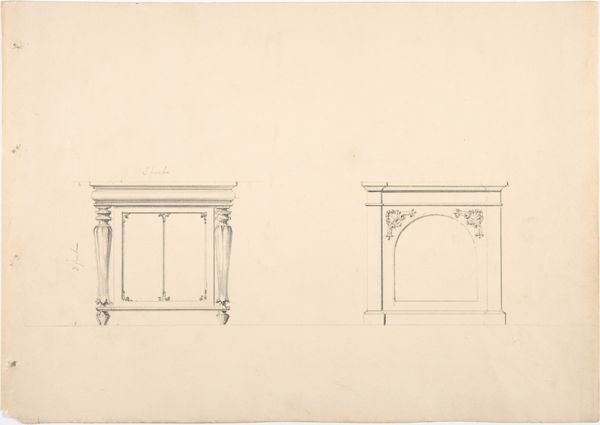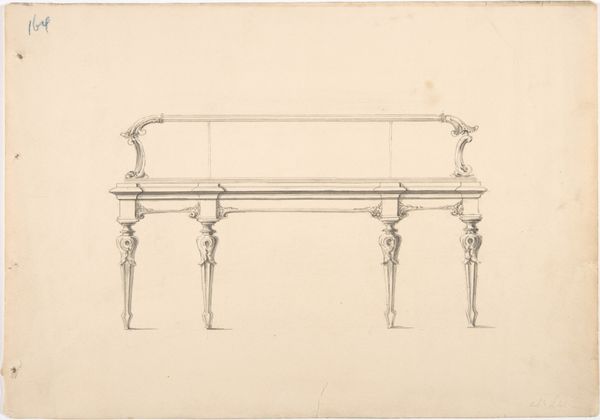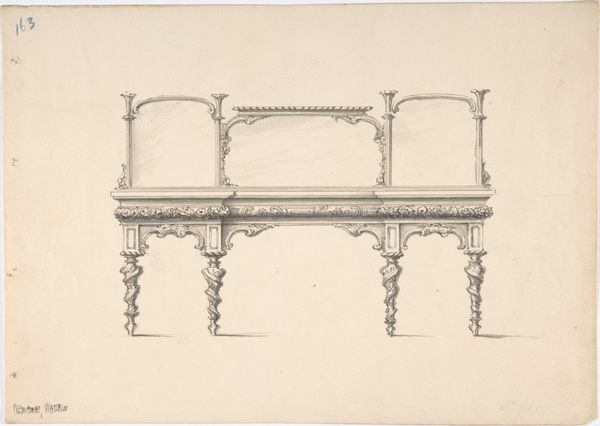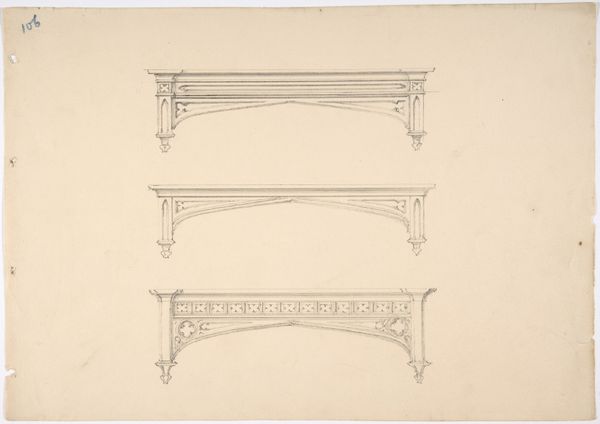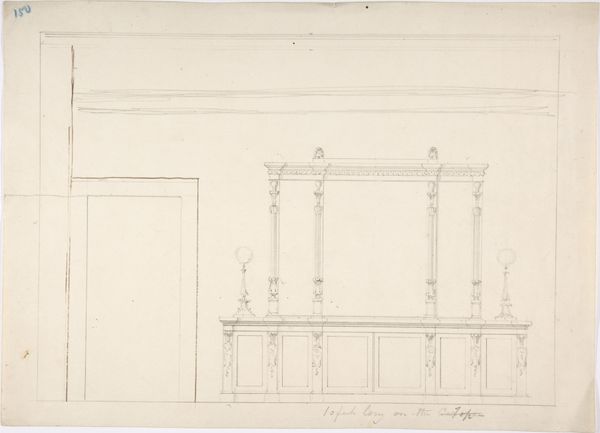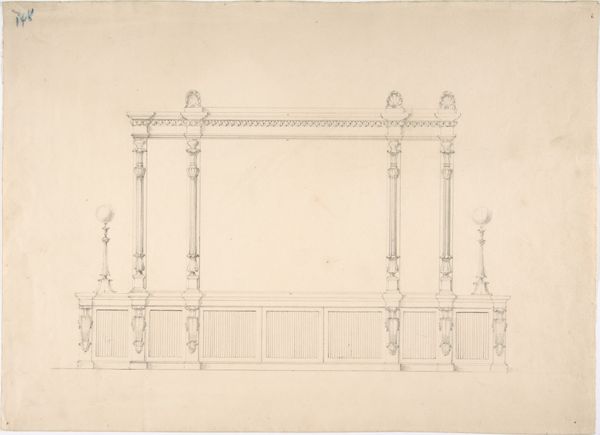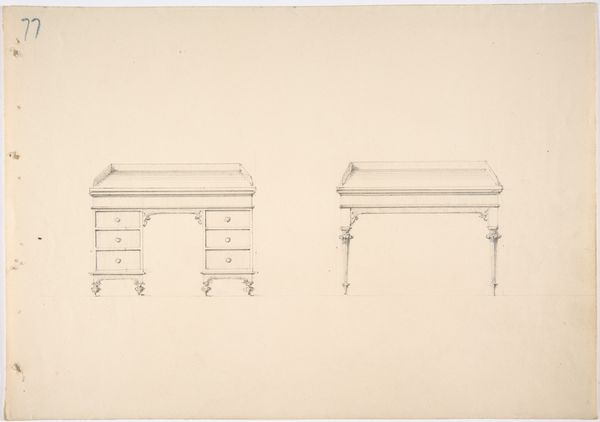
Design for a Mirrored Sideboard with Pointed Legs and Floral Ornament 1800 - 1850
0:00
0:00
drawing, print, pencil, architecture
#
drawing
#
neoclacissism
# print
#
etching
#
pencil
#
architecture
Dimensions: sheet: 8 9/16 x 12 1/4 in. (21.7 x 31.1 cm)
Copyright: Public Domain
Editor: We're looking at "Design for a Mirrored Sideboard with Pointed Legs and Floral Ornament," an anonymous work from between 1800 and 1850. It’s a drawing, a neoclassical design, combining pencil and etching. What strikes me is the delicate precision and symmetry – a kind of cool elegance. What do you see in this piece? Curator: I see more than just elegance; I perceive a longing embedded within the details. The mirrored surface – what does it reflect? Is it merely a surface, or a portal into idealized space? The pointed legs and floral ornament aren’t merely decorative, but act as contrasting symbols: a reach for the heavens mixed with earthly grounding. The Neoclassical era loved using motifs of balance and harmony, which spoke of rationality but also hinted at the unattainable nature of perfection. How does that tension resonate with you? Editor: That's interesting. I hadn't considered the tension between the practical function of furniture and this desire for perfection. Is that contrast typical of the period? Curator: Precisely. This era’s symbols were consciously employed as tools to influence thought and mood, hinting at concepts beyond material objects. Mirrors, particularly, acted as metaphors, representing perception and perhaps even vanity. Consider where this sideboard might be placed in a home, what the homeowner hoped to communicate. Editor: So the symbols within this seemingly simple furniture design reflect larger cultural and philosophical ideas? Curator: Yes. Visual symbols can be intentionally selected as conduits for emotional weight, influencing culture generation after generation. So, we must look to period influences and context for any intended messages. It's a visual language to be decoded, isn't it? Editor: Absolutely. I’ll never look at a sideboard the same way again! I appreciate how the design incorporates both symmetry and small deviations, almost questioning its own perfect form. Curator: And there’s the tension we spoke of, isn't it? It reminds us that perfection itself is a culturally constructed ideal.
Comments
No comments
Be the first to comment and join the conversation on the ultimate creative platform.





